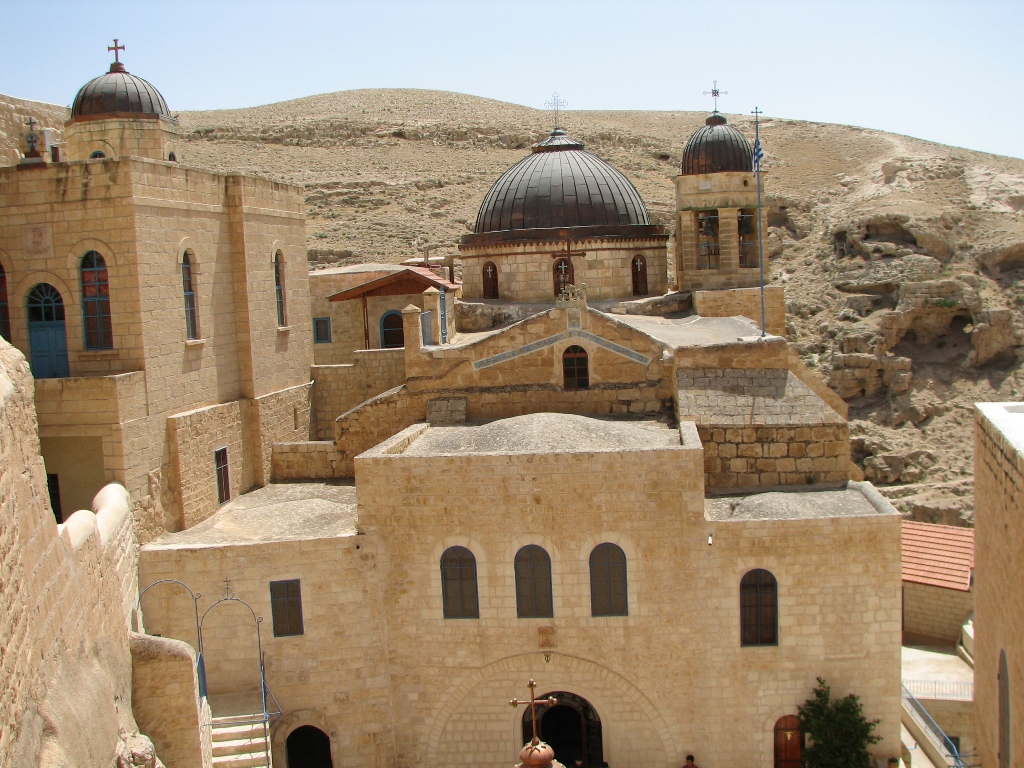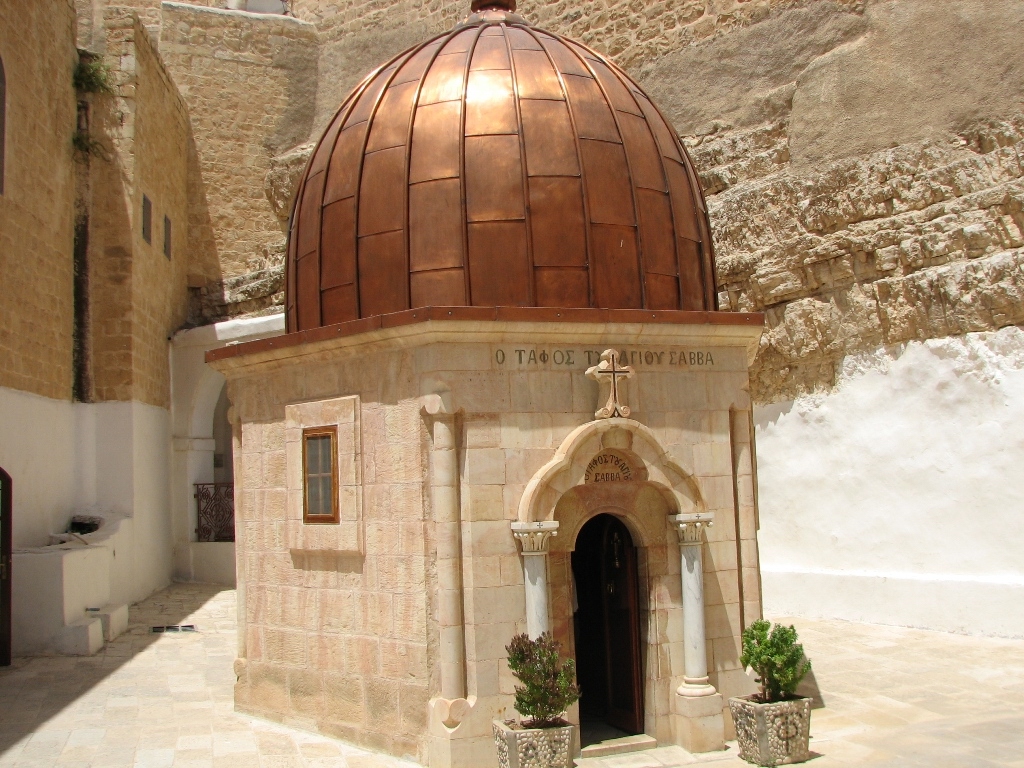Bones of St Sabas
(source: Mar Saba Monastery click (BibleWalks.com)clickSabas - Founding father Sabas was born in Mutalaska, Cappadocia, in 439AD. He was grown in the Coenobium of Cappadocia for 10 years, then at the age of 18 he came to Jerusalem. He moved to the Judean desert and stayed in the Coenobium of Euthymius for 12 years. At the age of 30 he was granted the permission to live in seclusion, and wandered for 5 years in the desert. Sabas lived about 10 years in a cave near the future location of the monastery. He found this remote site in Kidron creek, with its local spring, a perfect place for the seclusion. Sabas established, at the age of 45, a Laura in Mar Saba (483AD) - a cluster of caves or cells of hermits residing around the central monastery. Sabas directed the Great Laura of Mar Saba for nearly 50 years. During the years the place was expanded in order to accommodate the hundreds of monks who resided here, and walls were constructed in order to provide protection. Sabas helped to establish more monasteries in the desert: He and his monks established during this time a total of 13 (!) monasteries in the Judean desert - 7 Lauras and 6 Coenobiums. Several older monasteries came under his management - including the famous Monasteries of Euthemius and Theoktistus. In his times the number of hermits grew from hundreds to thousands. The author of the "Life of Sabbas", Kyrillos of Skythopolis, summarized his lifetime mission as "converted the desert to a city". His influence reshaped the customs and living habits of the monks. He was the first among the desert hermit fathers who formulated a set of written rules for the conduct and way of life for the desert monks in the Judean desert. After Sabas After his death in 532 at the age of 93, Sabas was buried in the yard of the monastery. By now, the Monastery was a small center for monks. This formed a Laura (Lavra) - a term in Orthodox Christianity meaning a cluster of caves or cells of hermits residing around a central monastery. During the years the place was expanded in order to accommodate the hundreds of monks who resided here, and walls were constructed in order to provide protection
source Atlas Tours
The Greek Orthodox monastery of Mar Saba or Saint Saba's Monastery; 14.5 km east of Bethlehem and a further 6 km from St. Theodosius; is considered to be the oldest ongoing inhabited monastery in the Holy Land and one of the oldest inhabited monasteries in the world, founded by Saint Saba of Cappadocia in the year 439.
The immense and spectacular monastery built into the rock overlooking the Kidron River, with its griddle of walls and towers, is a thrilling shock when it suddenly comes into view in the midst of this desertland.
It represents a way of life unchanged since the time of Constantine. It has 110 cells and sheltered 4000 monks in the 7th century although today it only houses ten monks.
Despite the fact that Mar Saba is reputed to have had a long tradition of hospitality to strangers, women have never been allowed to enter. This regulation persists today, so female visitors must be satisfied with a glimpse of the chapel and buildings from a nearby two-storey tower on the right entrance, the so-called Women's Tower, (According to tradition, this tower was built by the mother of St Sabas and was the only part she could enter.)
see THE GREAT MONASTIC SAINT ST SAVVA (CLICK NAME)
THE ORIGINAL GRAVE OF ST SABAS: Now where the monks are buried



No comments:
Post a Comment